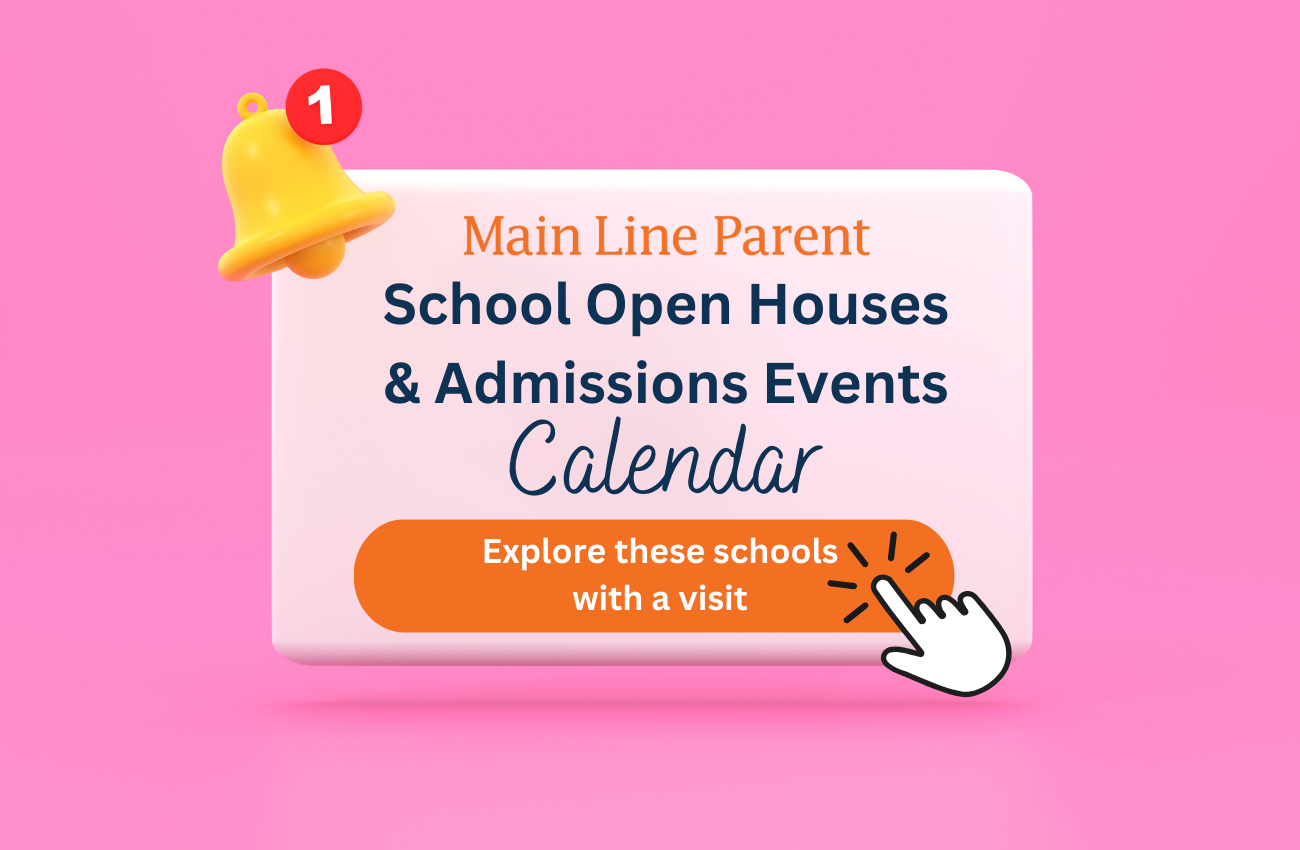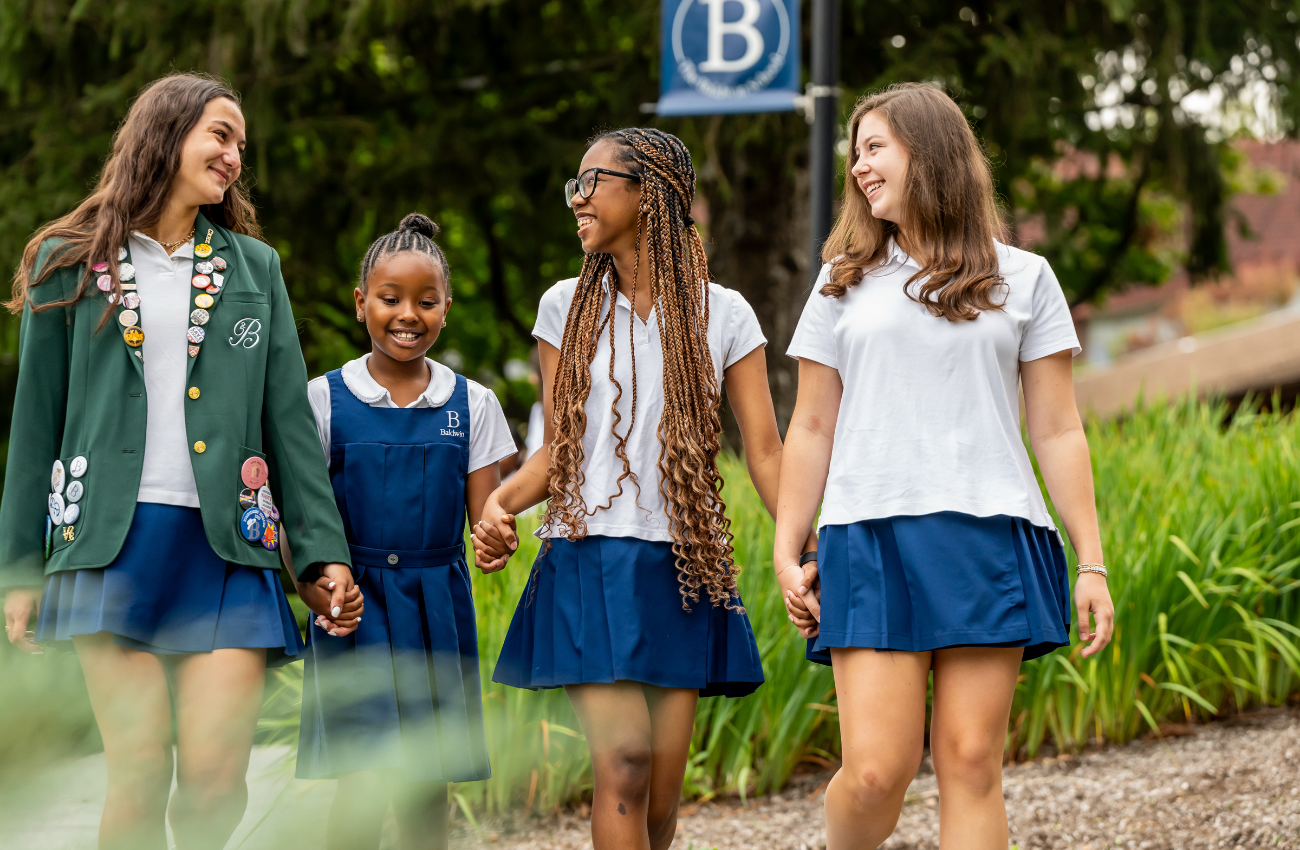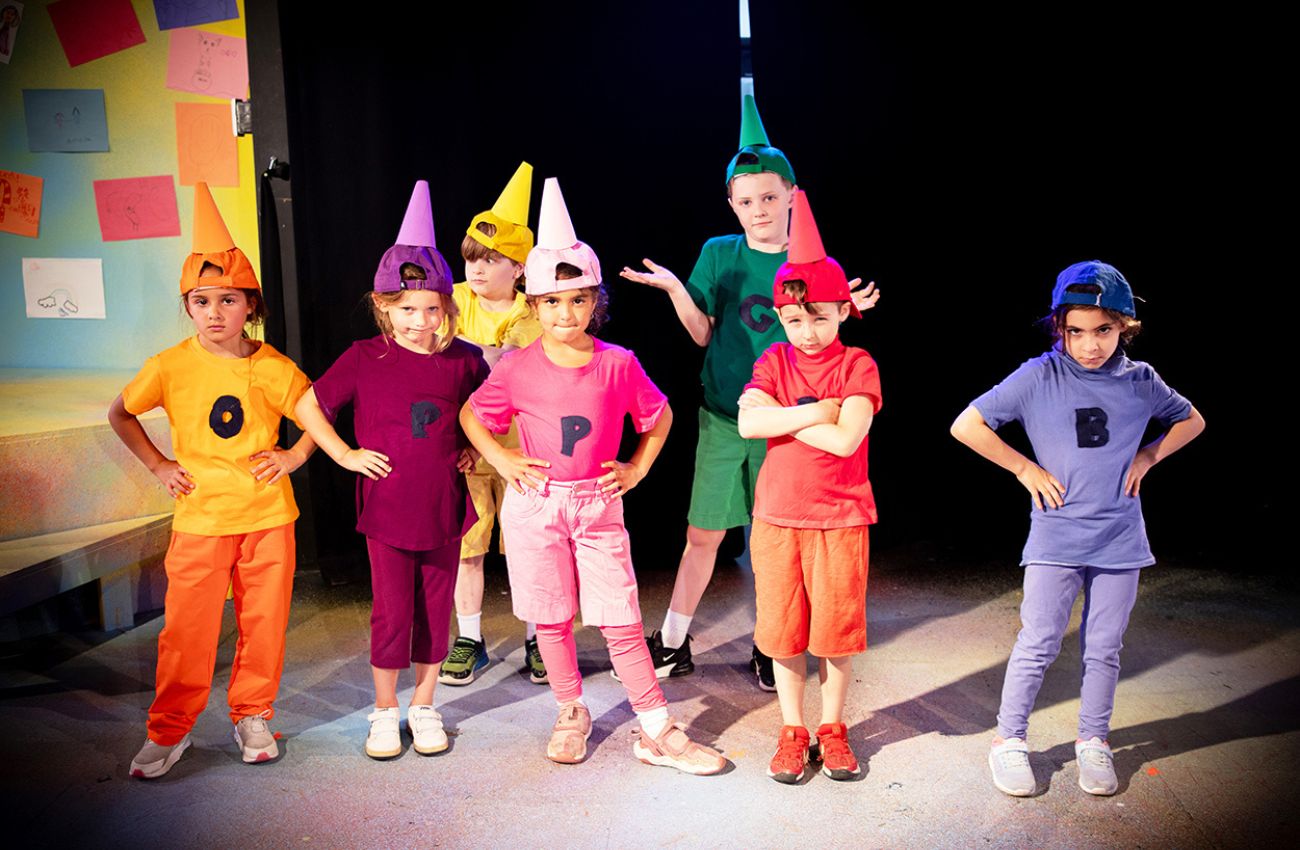Mathematics at Friends’ Central Lower School: A Foundation for Success
Students develop problem-solving skills, mathematical reasoning, and confidence—preparing them for success in advanced math courses in Middle and Upper School.
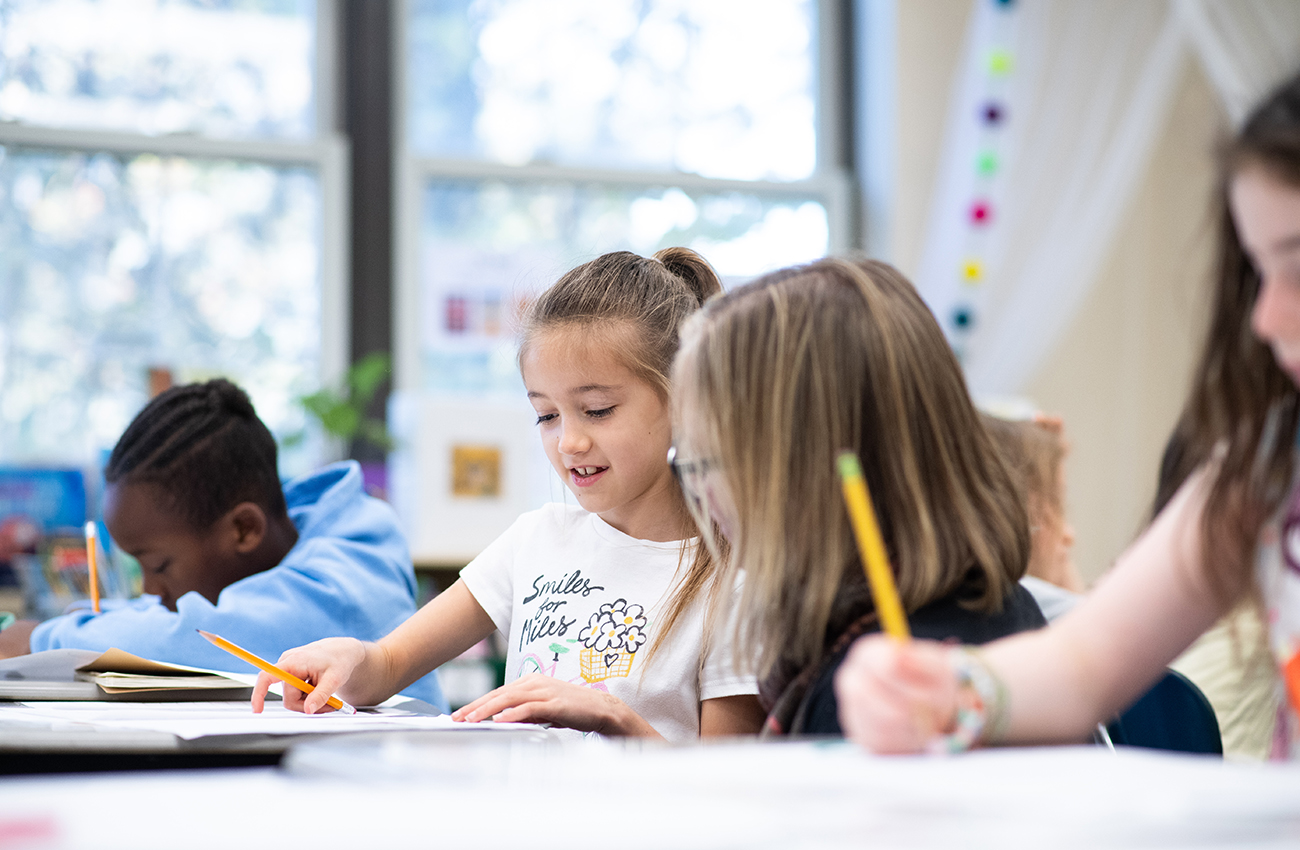
A strong foundation in mathematics at the elementary-school level is essential to setting students up for future success. At Friends’ Central School, a direct line can be drawn from math teaching in the Lower School to the achievements of students in the advanced mathematics classes of the Middle and Upper Schools.
Math Learning Grounded in Context
Friends’ Central Lower School teaches Contexts for Learning Mathematics in grades 1-5, “a curriculum that focuses on exploring the meaning behind the math so that students can fully understand what they are computing, rather than simply memorizing an algorithm,” explained Susan Clough, Friends’ Central Lower School Math Specialist who oversees the school’s math program.
Contexts for Learning Mathematics is a math workshop model. Each unit starts with a “context” – in first and second grade, it’s a story; in third, fourth, and fifth grades, it’s a scenario – that sets up the problem that the students will be solving. Instructors teach everything within that context. “If a student gets lost, you go right back to the context,” said Clough.
Students work with partners on the problem that they’re trying to solve. “Starting in second grade, students sketch out their ideas, and they make what we call a ‘poster,’ which is basically a visual using diagrams, charts, tables, number lines to explain their math thinking on paper. This is similar to mathematical proofs that come later in advanced math classes for much older students. After explaining their strategy, they’re really looking for the big math idea that’s behind it. And then we name that, asking, ‘What’s happening here mathematically?’” said Clough
Students explore the problem independently with their partner, using whichever strategy makes the most sense to them. Both during and at the end of each unit, students gather in a “math congress” to share strategies and reiterate any specific algorithms or vocabulary that the students need to know before moving onto the next unit, and teachers work with them throughout.
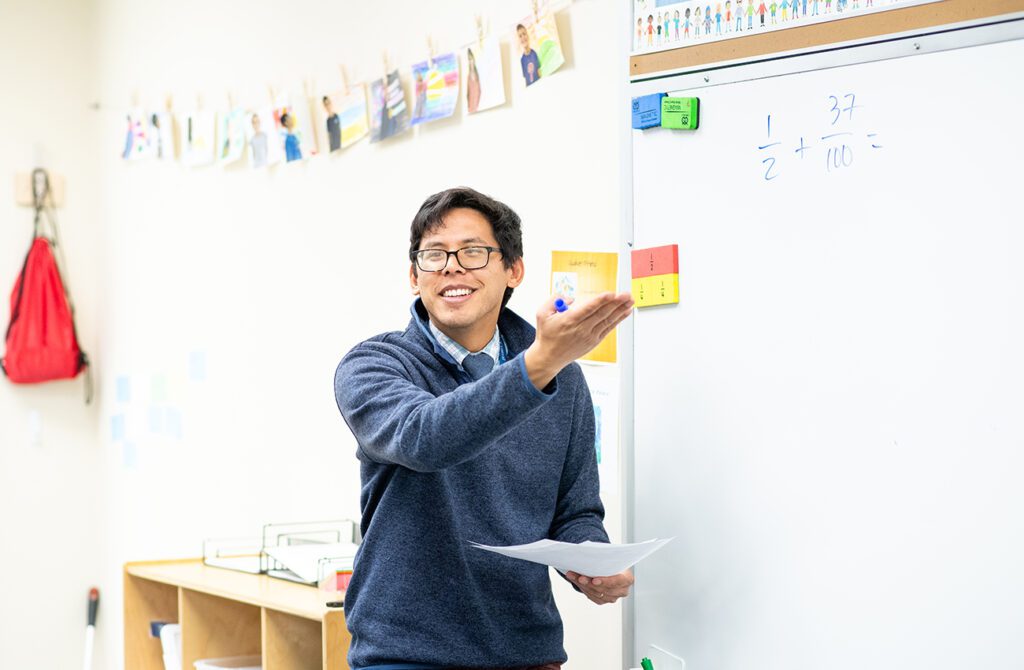
Photography by Mark Tassoni for Friends’ Central School
Why Traditional Algorithms Come Later
“Early on,” said Clough, “some parents were concerned that our students were not learning a more traditional, step-by-step mathematical algorithm the way they themselves had been taught. When we started to help parents understand number strings, showing them that there are strategies for how to approach the problem, parents were saying, ‘I wish I’d been taught math this way – it makes so much sense!’
“As an example, when you teach subtraction using the traditional algorithm (borrowing a digit, etc.), most first and second graders developmentally do not understand what’s happening mathematically. For many, it’s just a series of abstract instructions. Here, we teach it using what we call an ‘open number line.’ We’ll start at 84, for example, we’ll hop back however many hops we need until we get to 56, and then we count up the hops. You reach the same answer – the kids are learning to subtract – but you’re not losing the integrity of the number that way. So, 84 is not an ‘8’ and a ‘4’ – it’s ‘80’ and a ‘4.’”
Teachers ultimately introduce algorithms in third grade and beyond, but only once students have a complete grasp of what’s actually happening. As a consequence, students actually learn the algorithm very quickly and at an age-appropriate moment.
“That’s the difference between this program and other mathematics programs. It’s aiming for not only the understanding but also having kids be able to express that understanding using number lines, charts, graphs, tables, so they can really show you they know what it means. And then the teacher introduces the algorithm,” shared Clough. “It’s incredible what our kids can do in their heads. I was in a third-grade class, and they were doing 23 times 9 in their heads using a range of different strategies that they had learned.”
Natural Opportunities to Go Further
“For students who show a more advanced mathematical understanding, the sky’s the limit with a curriculum like this!” said Clough. “Within the context, there’s always so much more they can do. We have a group of kids in fourth grade this year who are really, really strong, and they love math. They were converting fractions; they were converting pints and cups and miles, investigating things like ‘How many yards is in a mile?’ One student wanted to find out how many inches there are in a mile! That’s math that most students aren’t ready to do at that age, and the program lends itself to that.”
As part of the math program, teachers “conference” with every pair of students every day to see where they are and what they’re doing. For the more advanced students, teachers are able to adapt to their level. It’s highly individualized. Students can all be working on the same problem but coming at it from different places.
Clough, as the math specialist, helps teachers by assisting both with the groups of advanced students or with those who are struggling, meeting them where they are. She is in the classroom with each grade every week. When the program was first implemented, Clough was doing a lot of teacher training and mentoring. “Now,” she shared, “our teachers are skilled at it, and my role is to jump in and do some small group work in the classroom or help provide individualized support to students who need it.”

Photography by Mark Tassoni for Friends’ Central School
Primed for Advanced Middle School Math and Beyond
“What we’re finding now that we’re four years into this program is that students’ math thinking ability and their ability to transition skills from one topic to the next has just exploded,” said Clough.
Since implementing the Context for Learning Mathematics curriculum, the Lower School has seen a major increase in the number of students who test into advanced mathematics classes as they enter sixth grade at Friends’ Central’s Middle School. “The tests they’re taking in fifth grade to qualify them is on material they’ve never seen before,” said Clough. “This shows us that they haven’t just memorized these algorithms; they know how to attack a problem – even a new one – using the strategies they’ve learned. The students amaze the teachers with the things they can figure out. We are truly pleased!”
And that sets Friends’ Central students on a trajectory to continue to excel as they move into the Upper School. Most FCS students complete at least a year of calculus before graduation, and many go well beyond. Advanced students have the opportunity to progress through Linear Algebra (Advanced) and Multivariable Calculus (Advanced) by the time they graduate.
About Friends’ Central
Founded in 1845, Friends’ Central School is a Quaker, co-educational college preparatory school for students in Nursery to grade 12. Their easily accessible Lower School campus (Nursery-grade 5) is on 18 idyllic acres on Old Gulph Road in Wynnewood. Students in grades 6-12 are on their 28-acre campus on City Avenue in Wynnewood.
Discover Friends’ Central this spring at an Admissions event.
Photography by Mark Tassoni for Friends’ Central School



